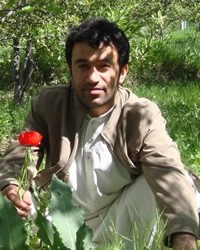Darwazi, Badakhshani in Afghanistan

Photo Source:
Safauddin Badakhshi - Wikimedia
Creative Commons
|
Send Joshua Project a map of this people group.
|
| People Name: | Darwazi, Badakhshani |
| Country: | Afghanistan |
| 10/40 Window: | Yes |
| Population: | 18,000 |
| World Population: | 18,000 |
| Primary Language: | Dari |
| Primary Religion: | Islam |
| Christian Adherents: | 0.00 % |
| Evangelicals: | 0.00 % |
| Scripture: | Complete Bible |
| Ministry Resources: | Yes |
| Jesus Film: | Yes |
| Audio Recordings: | Yes |
| People Cluster: | Tajik |
| Affinity Bloc: | Persian-Median |
| Progress Level: |
|
Introduction / History
Until the beginning of the 20th century, Afghanistan was mainly an affiliation of tribes, held together by intrigue and force of the rulers. Throughout the years, rival chiefs and foreign powers sought to control the major areas. It is home to more than 70 ethnic groups, with the Darwazi composing a tiny fraction of the total population.
The Darwazi live in the town of Darwazi on the banks of the Amu Darya River. We do not know if the Darwazi are named after the town in which they live or whether the town is named after the people. This river forms the border between Afghanistan and its northern neighbors: Tajikistan, Uzbekistan and Turkmenistan. The region has a temperate climate with enough precipitation to adequately water the crops. Their language, also called Darwazi, is part of the Indo-Iranian language family.
What Are Their Lives Like?
The economy of Afghanistan is based primarily on farming and raising livestock. While there is little fertile land in the mountains, there are good grazing grounds. As a result, the Darwazi practice a somewhat nomadic lifestyle, moving their herds according to the seasons.
It is thought that the Darwazi, like other groups in the area, have two classes: the lower-class artisans and the upper-class landowners. The main crafts of the artisans are woodworking, weaving, blacksmithing, pottery and basketry. Their products are used by all the village people. Bazaars are important trade centers for both agricultural products and craft items. Traditional handicrafts are widespread, highly developed and often very refined.
The basic unit of the Darwazi community is the village, which is surrounded by farmland and grazing land. The land is owned by the male head of the family, and grazing rights are inherited by his sons. Cooperation is based on kinship ties and relatives are expected to support one another in times of crisis or need.
Houses are usually built on the slopes of hills, but close to streams so that the villagers will have clean water. The size of the house depends on the wealth of the family. Most properties are enclosed by stone walls that divide the property into two sections: one for a living area and the other for livestock. Ethnic relations between the major people groups in Afghanistan have been marked by conflict. Historically, the stronger groups have attempted to dominate the weaker ones.
In addition to class distinctions, the Darwazi practice a division of labor according to sex. Traditionally, both males and females were expected to contribute in the making of a meal. The women provided the bread, which symbolized their responsibilities of farming and gathering the firewood. The men supplied a dairy product, representing their responsibility of herding the animals.
What Are Their Beliefs?
Islam was introduced to Afghanistan during the 7th century with the Arab invasions. By the 9th century, the Darwazi had converted to Islam. Today, the Darwazi are completely Sunni Muslim. As Muslims, the Darwazi believe in one god (Allah), daily prayers, almsgiving, fasting and making a pilgrimage to Mecca during one's lifetime.
What Are Their Needs?
Their homeland is marked by a lack of adequate medical care.
Prayer Points
Ask the Lord to bring a fair and lasting peace to Afghanistan.
Pray that the Holy Spirit to soften the hearts of the Darwazi towards the gospel.
Pray for the Lord to speak to Darwazi elders and family leaders through dreams and visions, drawing them to the only Savior.
Pray for God to raise prayer teams who will begin breaking up the soil through worship and intercession.